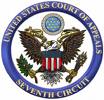Seventh Circuit Criminal Case of the Week: Yes, Eco-Terrorists Are Real Terrorists
 On the night of July 20, 2000, Katherine Christianson, Bryan Rivera, and two companions damaged or destroyed more than 500 trees at a United States Forest Service facility. Was it a prank? A dare? A harvest for the thneed industry? No, Christianson and Rivera were members of the eco-terrorist group Earth Liberation Front, and their target was the Forest Service’s genetic-engineering experiments on trees in Rhinelander, Wisconsin. ELF issued a press release the next day claiming responsibility for the attack and asserting that “the Forest Service, like industry, are [sic] capitalists driven by insane desire to make money and control life.”
On the night of July 20, 2000, Katherine Christianson, Bryan Rivera, and two companions damaged or destroyed more than 500 trees at a United States Forest Service facility. Was it a prank? A dare? A harvest for the thneed industry? No, Christianson and Rivera were members of the eco-terrorist group Earth Liberation Front, and their target was the Forest Service’s genetic-engineering experiments on trees in Rhinelander, Wisconsin. ELF issued a press release the next day claiming responsibility for the attack and asserting that “the Forest Service, like industry, are [sic] capitalists driven by insane desire to make money and control life.”
Eight years later, Christianson and Rivera pled guilty to destroying government property and were sentenced to two and three years of prison, respectively. On appeal, Rivera challenged the district judge’s decision to apply the terrorism enhancement of the sentencing guidelines. He argued that he was not a terrorist because his motivation was “the hope of saving our earth from destruction.” The Seventh Circuit, however, rejected his argument and affirmed the sentence in United States v. Christianson (No. 09-1526) (Manion, J.).

 For the second autumn in a row, the federal public defenders here in Milwaukee were kind enough to invite me to speak on the U.S. Supreme Court’s criminal docket, reviewing last term’s cases and previewing the new term. The event is a great opportunity for me to think about patterns and themes that cut across individual cases. I plan now to recapitulate some of my obervations in a series of short blog posts over the next couple weeks. This is the first.
For the second autumn in a row, the federal public defenders here in Milwaukee were kind enough to invite me to speak on the U.S. Supreme Court’s criminal docket, reviewing last term’s cases and previewing the new term. The event is a great opportunity for me to think about patterns and themes that cut across individual cases. I plan now to recapitulate some of my obervations in a series of short blog posts over the next couple weeks. This is the first.